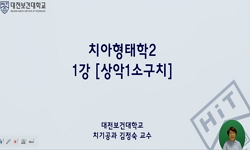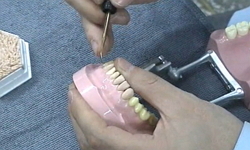Twelve morphological characters and the biochemical composition of Undaria pinnatifida f. distans sporophytes growing on the rocky shores of Jindo and Wando and on cultivation ropes in Kijang were measured to determine whether each population could be...
http://chineseinput.net/에서 pinyin(병음)방식으로 중국어를 변환할 수 있습니다.
변환된 중국어를 복사하여 사용하시면 됩니다.
- 中文 을 입력하시려면 zhongwen을 입력하시고 space를누르시면됩니다.
- 北京 을 입력하시려면 beijing을 입력하시고 space를 누르시면 됩니다.
https://www.riss.kr/link?id=A104437559
-
저자
박광재 (국립수산과학원 서해수산연구소) ; Bo Yeon Kim (Wonkwang University) ; Seo Kyoung Park (Wonkwang University) ; 이종화 (군산간호대학교) ; 김영식 (군산대학교) ; 최한길 (원광대학교) ; 남기완 (부경대학교)
- 발행기관
- 학술지명
- 권호사항
-
발행연도
2012
-
작성언어
English
- 주제어
-
등재정보
KCI등재,SCIE,SCOPUS
-
자료형태
학술저널
-
수록면
189-196(8쪽)
-
KCI 피인용횟수
7
- DOI식별코드
- 제공처
-
0
상세조회 -
0
다운로드
부가정보
다국어 초록 (Multilingual Abstract)
Twelve morphological characters and the biochemical composition of Undaria pinnatifida f. distans sporophytes growing on the rocky shores of Jindo and Wando and on cultivation ropes in Kijang were measured to determine whether each population could be characterized by morphological features and biochemical composition. The goal of this study was to compare phenotypic variations between populations as they relate to environmental conditions. The sporophytes of the Kijang population were two times longer and 19 times heavier than those at Jindo. Sporophylls of the Jindo U. pinnatifida population were significantly smaller in length, width, frill number, and weight than those at Wando and Kijang.
Kijang Undaria plants showed the highest contents of total protein, crude fiber, total amino acids, the amount of essential amino acids, the proportion of total unsaturated fatty acids, and eicosapentaenoic acid. However, the Jindo population showed the greatest content of carbohydrates, lipids, and minerals (Zn and Ca) of the three U. pinnatifida populations.
In particular, Zn content of Jindo plants was 30 times greater than that of Kijang plants. Thus, the proximate composition,mineral composition, amino acids, and fatty acids of Undaria pinnatifida plants were distinguishable among the three representative Undaria populations evaluated. These results suggest that morphological and biochemical differences of the three U. pinnatifida populations can be attributed to differences in environmental conditions of their habitats.
참고문헌 (Reference)
1 이연정, "미역의 부위별 무기성분 및 알긴산 함량에 관한 연구" 한국식생활문화학회 19 (19): 691-700, 2004
2 임영근, "기장산과 완도산 식용해조류 중의 미네랄 함량" 한국수산과학회 39 (39): 16-22, 2006
3 Ohno, M., "Undaria cultivation ‘Wakame’, In Seaweed Cultivation and Marine Ranching" Japan International Cooperation Agency 41-49, 1993
4 Okamura, K., "Undaria and its species" 29 : 266-278, 1915
5 Ii, A., "The textbook of “Wakame”(Undaria pinnatifida) culture" Hyogo Prefecture, Federation of Fisheries Cooperative Association 41-, 1964
6 Critchley, A. T., "The seaweed resources of Korea, In Seaweed Resources of the World" Kanagawa International Fisheries Training Center, Japan International cooperative Agency 15-33, 1998
7 Castric-Fey, A., "The introduced alga Undaria pinnatifida (Laminariales, Alariaceae) in the rocky shore ecosystem of the St Malo area: morphology and growth of the sporophyte" 42 : 71-82, 1999
8 Kim, Y. S., "Temperature and light responses on the growth and maturation of gametophytes of Undaria pinnatifida (Harvey) Suringar in Korea" 30 : 505-510, 1997
9 Kaehler, S., "Summer and winter comparisons in the nutritional value of marine macroalgae from Hong Kong" 39 : 11-17, 1996
10 Akiyama, K., "Studies of ecology and culture of Undaria pinnatifida (Harv.) Sur. II. Environmental factors affecting the growth and maturation of gametophyte" 25 : 143-170, 1965
1 이연정, "미역의 부위별 무기성분 및 알긴산 함량에 관한 연구" 한국식생활문화학회 19 (19): 691-700, 2004
2 임영근, "기장산과 완도산 식용해조류 중의 미네랄 함량" 한국수산과학회 39 (39): 16-22, 2006
3 Ohno, M., "Undaria cultivation ‘Wakame’, In Seaweed Cultivation and Marine Ranching" Japan International Cooperation Agency 41-49, 1993
4 Okamura, K., "Undaria and its species" 29 : 266-278, 1915
5 Ii, A., "The textbook of “Wakame”(Undaria pinnatifida) culture" Hyogo Prefecture, Federation of Fisheries Cooperative Association 41-, 1964
6 Critchley, A. T., "The seaweed resources of Korea, In Seaweed Resources of the World" Kanagawa International Fisheries Training Center, Japan International cooperative Agency 15-33, 1998
7 Castric-Fey, A., "The introduced alga Undaria pinnatifida (Laminariales, Alariaceae) in the rocky shore ecosystem of the St Malo area: morphology and growth of the sporophyte" 42 : 71-82, 1999
8 Kim, Y. S., "Temperature and light responses on the growth and maturation of gametophytes of Undaria pinnatifida (Harvey) Suringar in Korea" 30 : 505-510, 1997
9 Kaehler, S., "Summer and winter comparisons in the nutritional value of marine macroalgae from Hong Kong" 39 : 11-17, 1996
10 Akiyama, K., "Studies of ecology and culture of Undaria pinnatifida (Harv.) Sur. II. Environmental factors affecting the growth and maturation of gametophyte" 25 : 143-170, 1965
11 Hay, C. H., "Seasonality of the ypicales Asian kelp Undaria pinnatifida in New Zealand" 36 : 461-476, 1993
12 Solimabi, B. D., "Seasonal changes in carrageenan and other biochemicalconstituents of Hypnea musciformis" 9 : 134-136, 1980
13 Sohn, C. H., "On the morphological variation of Undaria pinnatifida (Har.) Sur. Grown in the culture grounds at Onsan Bay, Korea" 24 : 5-12, 1984
14 Minowa, T., "Oil production from algal cells of Dunaliella tertiolectaby direct thermochemical liquefaction" 74 : 1735-1738, 1995
15 Taniguchi, K., "Morphological variation of Undaria pinnatifida (Harvey) Suringer-I. On the difference of growth and morphological characteristics of two types at Matsushima Bay, Japan" 42 : 1-9, 1981
16 Kito, H., "Morphological variation of Undaria pinnatifida (Harvey) Suringar. II. Comparison of the thallus morphology of cultured F1 plants originated from parental types of two different morphologies" 42 : 11-18, 1981
17 Lee, K. Y., "Morphological characteristics and growth of two forms of sea mustard, Undaria pinnatifida f. distans and U. pinnatifida f. typica" 6 : 71-87, 1993
18 Hara, M., "Heterosis in growth of Undaria pinnatifida (Harvey) Suringar" 47 : 47-50, 1985
19 Topping, G., "Heavy metals in shellfish from Scottish waters" 1 : 379-384, 1972
20 남기완, "Growth and reproductive patterns of Undaria pinnatifida sporophytes in a cultivation farm in Busan, Korea" SPRINGER 19 (19): 131-138, 200704
21 Saito, Y., "Fundamental studies on the propagation of Undaria pinnatifida (Harv.) Sur" 3 : 1-101, 1962
22 Hong, J. -S, "Fatty acid composition of Miyeok(Undaria pinnatifida) and Pare (Enteromorpha compressa)" 20 : 376-380, 1991
23 Dawes, C. J., "Exposure of Gracilaria to various environmental conditions. II. The effect on fatty acid composition" 36 : 289-296, 1993
24 Underwood, A. J., "Experiments in ecology: their logical design and interpretation using analysis of variance" Cambridge University Press 1997
25 Stuart, M. D., "Effects of seasonal growth rate on morphological variation of Undaria pinnatifida (Alariaceae, Phaeophyceae)" 398 : 191-199, 1999
26 Akiyama, K., "Cultivation of Undaria pinnatifida(Harvey) Suringar, the decrease in crops fromnatural plants following crop increase from cultivation" 44 : 91-100, 1982
27 Yamanaka, R., "Cultivation and utilization of Undaria pinnatifida (wakame) as food" 5 : 249-253, 1993
28 Saito, Y., "Contributions to the Systematics of Benthic Marine Algae of the North Pacific" Japanese Society of Phycology 117-131, 1972
29 Dubois, M., "Calorimetric method for determination of sugars and related substances" 28 : 350-356, 1956
30 Sokal, R. R., "Biometry. 3rd ed" W. H. Freeman 887-, 1995
31 Manivannan, K., "Biochemical composition ofseaweeds from Mandapam coastal regions along SoutheastCoast of India" 1 : 32-37, 2008
32 Saito, Y., "An ecological study of Undaria pinnatifida SUR. V. On the shape of cultured fronds-1" 26 : 250-258, 1960
33 Rhee, S. -H., "A study on the calcium and iron content of the Undaria pinnatifida Suringar" 1 : 25-31, 1972
동일학술지(권/호) 다른 논문
-
Morphological and biochemical differences in three Undaria pinnatifida populations in Korea
- The Korean Society of Phycology
- Park, Kwang-Jae
- 2012
- KCI등재,SCIE,SCOPUS
-
- The Korean Society of Phycology
- Hong, Ji-Won
- 2012
- KCI등재,SCIE,SCOPUS
-
- The Korean Society of Phycology
- Kang, Min-Cheol
- 2012
- KCI등재,SCIE,SCOPUS
-
Growth dynamics of the seagrass, Zostera marina in Jindong Bay on the southern coast of Korea
- The Korean Society of Phycology
- Kim, Young-Kyun
- 2012
- KCI등재,SCIE,SCOPUS
분석정보
인용정보 인용지수 설명보기
학술지 이력
| 연월일 | 이력구분 | 이력상세 | 등재구분 |
|---|---|---|---|
| 2024 | 평가예정 | 해외DB학술지평가 신청대상 (해외등재 학술지 평가) | |
| 2021-01-01 | 평가 | 등재학술지 선정 (해외등재 학술지 평가) |  |
| 2020-12-01 | 평가 | 등재후보로 하락 (해외등재 학술지 평가) |  |
| 2011-01-01 | 평가 | 등재학술지 유지 (등재유지) |  |
| 2009-01-01 | 평가 | 등재학술지 유지 (등재유지) |  |
| 2007-01-01 | 평가 | 등재학술지 유지 (등재유지) |  |
| 2004-01-01 | 평가 | 등재학술지 선정 (등재후보2차) |  |
| 2003-01-01 | 평가 | 등재후보 1차 PASS (등재후보1차) |  |
| 2002-01-01 | 평가 | 등재후보학술지 유지 (등재후보1차) |  |
| 2000-07-01 | 평가 | 등재후보학술지 선정 (신규평가) |  |
학술지 인용정보
| 기준연도 | WOS-KCI 통합IF(2년) | KCIF(2년) | KCIF(3년) |
|---|---|---|---|
| 2016 | 1.37 | 0.52 | 1.04 |
| KCIF(4년) | KCIF(5년) | 중심성지수(3년) | 즉시성지수 |
| 0.82 | 0.7 | 0.601 | 0.12 |






 KCI
KCI






